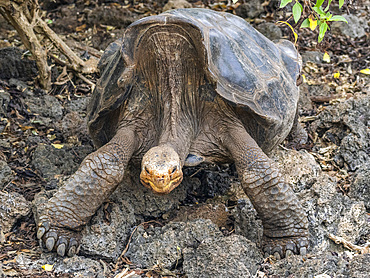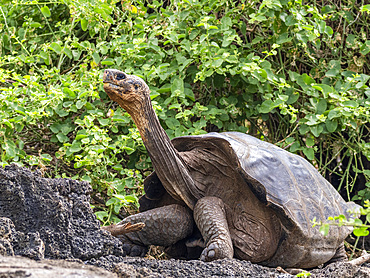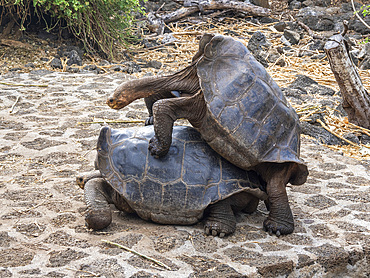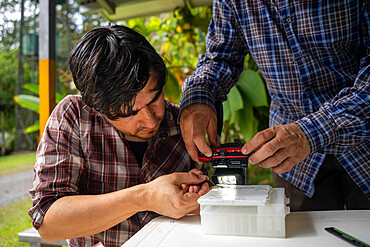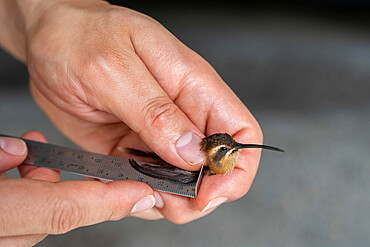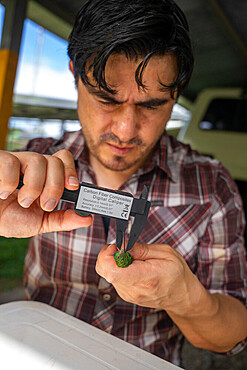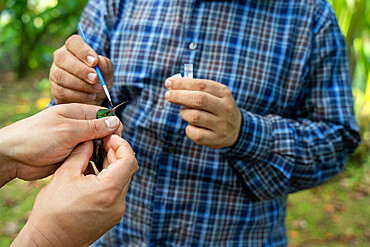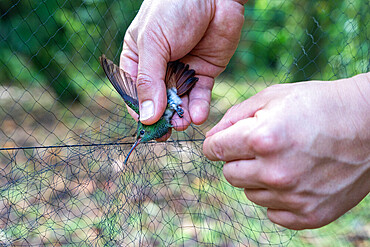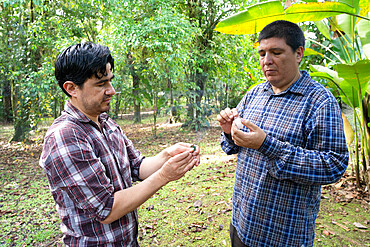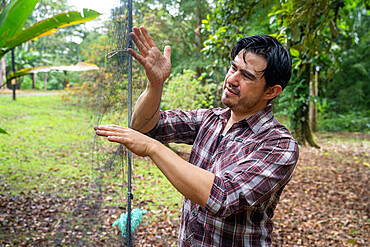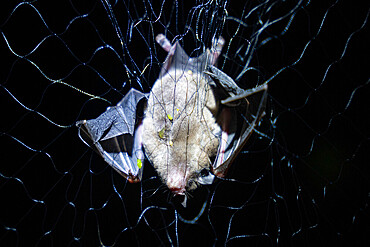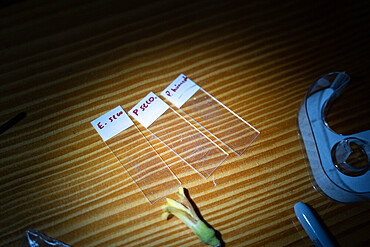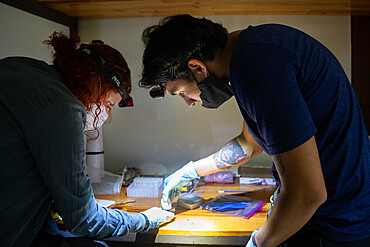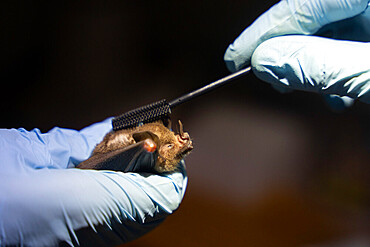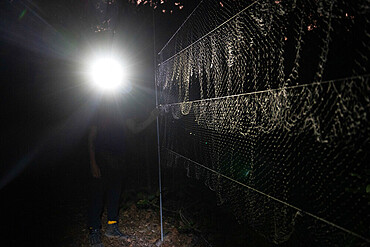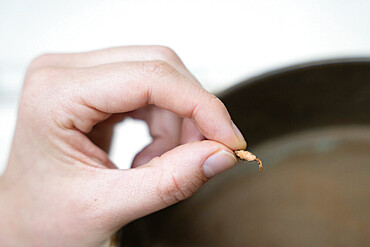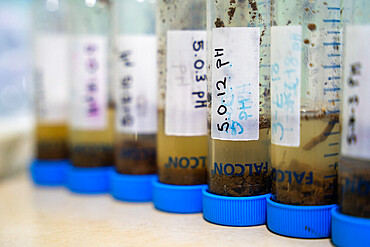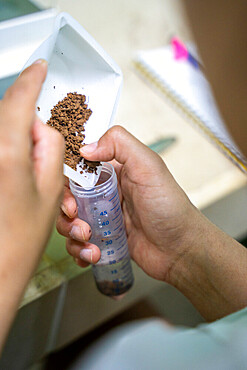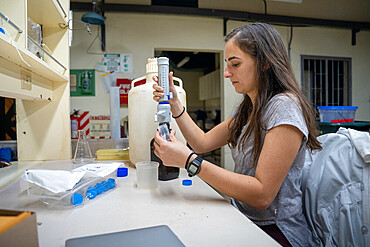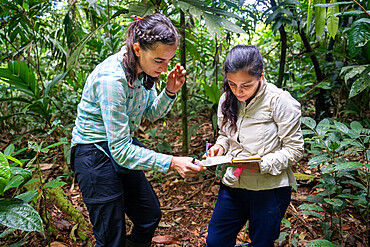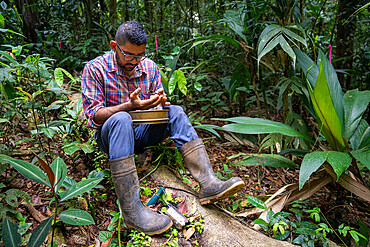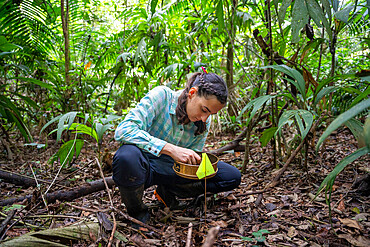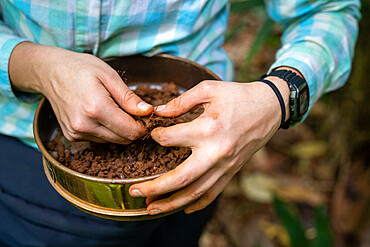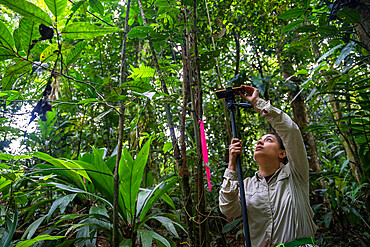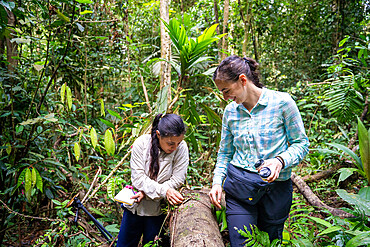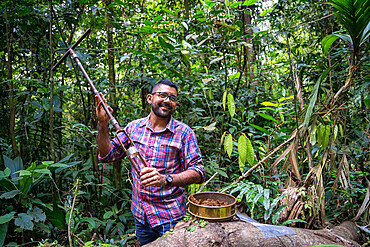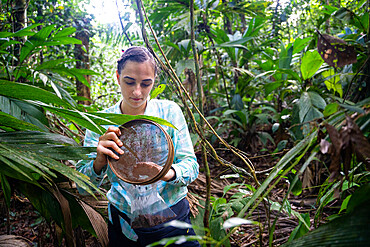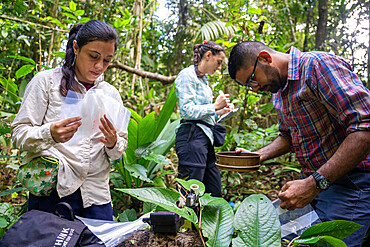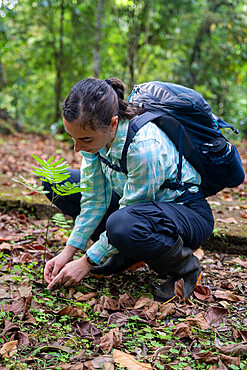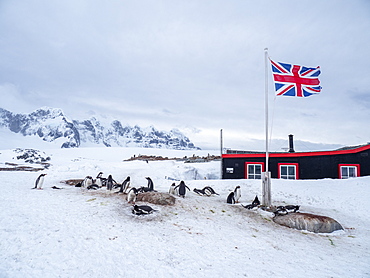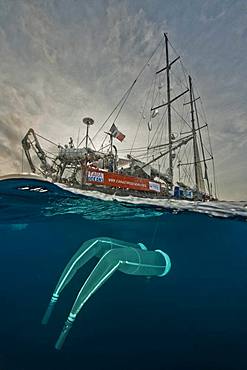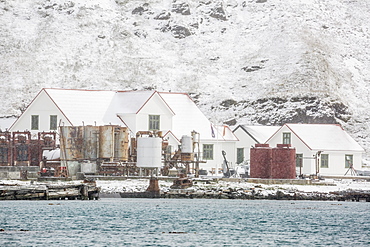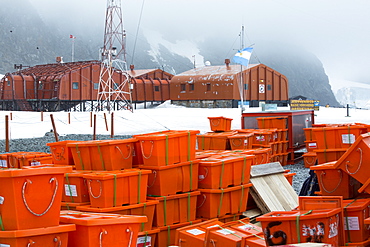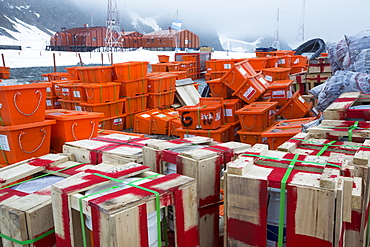Recent searches
Loading...
1112-8386 - Captive Galapagos giant tortoise (Chelonoidis spp), Charles Darwin Research Station, Santa Cruz Island, Galapagos Islands, UNESCO World Heritage Site, Ecuador, South America
1112-8385 - Close-up of foot of captive Galapagos giant tortoise (Chelonoidis spp), Charles Darwin Research Station, Santa Cruz Island, Galapagos Islands, UNESCO World Heritage Site, Ecuador, South America
1112-8368 - Captive Galapagos giant tortoise (Chelonoidis spp), Charles Darwin Research Station, Santa Cruz Island, Galapagos Islands, UNESCO World Heritage Site, Ecuador, South America
1112-8357 - Captive Galapagos giant tortoises (Chelonoidis spp), Charles Darwin Research Station, Santa Cruz Island, Galapagos Islands, UNESCO World Heritage Site, Ecuador, South America
1112-8354 - Captive Galapagos giant tortoises (Chelonoidis spp), Charles Darwin Research Station, Santa Cruz Island, Galapagos Islands, UNESCO World Heritage Site, Ecuador, South America
1112-8352 - Captive Galapagos giant tortoises (Chelonoidis spp), Charles Darwin Research Station, Santa Cruz Island, Galapagos Islands, UNESCO World Heritage Site, Ecuador, South America
860-291442 - Researcher photographing a 2.6 gram Stripe-throated Hermit hummingbird as part of a pollination study, rainforest at the "La Selva" research station in Puerto Viejo de Sarapiqui, Costa Rica
860-291441 - Researcher measuring a 2.6 gram Stripe-throated Hermit hummingbird wing as part of a pollination study, rainforest at the "La Selva" research station in Puerto Viejo de Sarapiqui, Costa Rica
860-291439 - Researcher measuring the beak of a Rufous-tailed hummingbird as part of a pollination study, rainforest at the "La Selva" research station in Puerto Viejo de Sarapiqui, Costa Rica
860-291440 - Researchers picking up pollen with a brush from the beak of a hummingbird Stripe-throated Hermit as part of a pollination study, rainforest at the "La Selva" research station in Puerto Viejo de Sarapiqui, Costa Rica
860-291438 - Researchers picking up pollen with a brush from the beak of a Rufous-tailed hummingbird as part of a pollination study, rainforest at the "La Selva" research station in Puerto Viejo de Sarapiqui , Costa Rica
860-291436 - Researcher catching Rufous-tailed Hummingbird (Amazilia Tzacatl) in a net set up for pollination study, rainforest at "La Selva" research station in Puerto Viejo de Sarapiqui, Costa Rica
860-291437 - Researchers picking up pollen using tape on the beak of a Rufous-tailed hummingbird as part of a pollination study, rainforest at the "La Selva" research station in Puerto Viejo de Sarapiqui, Costa Rica
860-291434 - Researcher setting up a net to capture hummingbirds as part of a pollination study, rainforest at the "La Selva" research station in Puerto Viejo de Sarapiqui, Costa Rica
860-291435 - Rufous-tailed Hummingbird (Amazilia tzacatl) in a net set up by a researcher as part of a pollination study, rainforest at the "La Selva" research station in Puerto Viejo de Sarapiqui, Costa Rica
860-291433 - Fringe-lipped Bat (Trachops cirrhosus) in the hand of a scientist as part of a pollination study, tropical forest at the "La Selva" research station in Puerto Viejo de Sarapiqui, Costa Rica
860-291432 - Bat caught in a net as part of a pollination study, rainforest at the "La Selva" research station in Puerto Viejo de Sarapiqui, Costa Rica
860-291431 - Researcher unhooking a bat caught in a net as part of a pollination study, rainforest at the "La Selva" research station in Puerto Viejo de Sarapiqui, Costa Rica
860-291430 - Researchers applying a mascara brush to the hairs of a Sowell's short-tailed bat (Carollia sowelli) to test methods to capture pollen that bats may carry as part of a pollination study, rainforest at the "La Selva" research station in Puerto Viejo de Sarapiqui, Costa Rica
860-291429 - 3 microscope slides to analyze pollen transported on bat hairs, "La Selva" research station in Puerto Viejo de Sarapiqui, Costa Rica
860-291427 - Researchers applying tape to the hairs of a bat to test methods to capture the pollen it carries as part of a pollination study, rainforest at the 'La Selva' research station in Puerto Viejo de Sarapiqui, Costa Rica
860-291428 - Researchers applying a mascara brush to the hairs of a Sowell's short-tailed bat (Carollia sowelli) to test methods to capture pollen that bats may carry as part of a pollination study, rainforest at the "La Selva" research station in Puerto Viejo de Sarapiqui, Costa Rica
860-291426 - Sowell's short-tailed bat (Carollia sowelli) caught as part of a pollination study, rainforest at the "La Selva" research station in Puerto Viejo de Sarapiqui, Costa Rica
860-291424 - Net for catching bats as part of a pollination study, rainforest at the "La Selva" research station in Puerto Viejo de Sarapiqui, Costa Rica
860-291425 - Sowell's short-tailed bat (Carollia sowelli) caught as part of a pollination study, rainforest at the "La Selva" research station in Puerto Viejo de Sarapiqui, Costa Rica
860-291423 - Installation of a sign on a hiking trail indicating the presence of nets to capture bats as part of a pollination study, rainforest of the "La Selva" research station in Puerto Viejo de Sarapiqui, Costa Ricardo
860-291421 - 27-year-old female researcher working on nitrogen exchange between bacteria and the roots of legumes showing an example of a nodule of bacteria attached to the roots in the rainforest of the "La Selva" research station in Puerto Viejo de Sarapiqui, Costa Rica
860-291422 - Earth diluted with water in order to extract the PH from the soil as part of a study on nitrogen exchanges between bacteria and the roots of legumes in the tropical forest of the "La Selva" research station in Puerto Viejo from Sarapiqui, Costa Rica
860-291420 - Earth diluted with water in order to extract the PH from the soil as part of a study on nitrogen exchanges between bacteria and the roots of legumes in the tropical forest of the "La Selva" research station in Puerto Viejo from Sarapiqui, Costa Rica
860-291419 - 27-year-old researcher working in a lab on nitrogen exchange between bacteria and the roots of legumes in the rainforest at the "La Selva" research station in Puerto Viejo de Sarapiqui, Costa Rica
860-291418 - 27-year-old researcher and her team working on nitrogen exchange between bacteria and the roots of legumes in the rainforest at the "La Selva" research station in Puerto Viejo de Sarapiqui, Costa Rica
860-291417 - Research assistant working on nitrogen exchanges between bacteria and the roots of legumes in the tropical forest of the "La Selva" research station in Puerto Viejo de Sarapiqui, Costa Rica
860-291415 - 27-year-old researcher working on nitrogen exchange between bacteria and the roots of legumes in the rainforest at the "La Selva" research station in Puerto Viejo de Sarapiqui, Costa Rica
860-291416 - 27-year-old researcher working on nitrogen exchange between bacteria and the roots of legumes in the rainforest at the "La Selva" research station in Puerto Viejo de Sarapiqui, Costa Rica
860-291414 - 29-year-old assistant researcher working on nitrogen exchange between bacteria and the roots of legumes in the rainforest at the "La Selva" research station in Puerto Viejo de Sarapiqui, Costa Rica
860-291413 - 27-year-old researcher working on nitrogen exchange between bacteria and the roots of legumes in the rainforest at the "La Selva" research station in Puerto Viejo de Sarapiqui, Costa Rica
860-291411 - Instrument for measuring soil humidity at research station ?La Selva? in Puerto Viejo de Sarapiqui, Costa Rica
860-291412 - Research assistant working on nitrogen exchanges between bacteria and the roots of legumes in the tropical forest of the "La Selva" research station in Puerto Viejo de Sarapiqui, Costa Rica
860-291409 - 27-year-old researcher working on nitrogen exchange between bacteria and the roots of legumes in the rainforest at the "La Selva" research station in Puerto Viejo de Sarapiqui, Costa Rica
860-291410 - 27-year-old researcher working on nitrogen exchange between bacteria and the roots of legumes in the rainforest at the "La Selva" research station in Puerto Viejo de Sarapiqui, Costa Rica
860-291408 - 27-year-old researcher and her team working on nitrogen exchange between bacteria and the roots of legumes in the rainforest at the "La Selva" research station in Puerto Viejo de Sarapiqui, Costa Rica
860-291407 - Researchers walking through the rainforest at the "La Selva" research station in Puerto Viejo de Sarapiqui, Costa Rica
860-291406 - 27-year-old researcher in front of the Pracaxi legume (Pentaclethra macroloba) at the "La Selva" research station in Puerto Viejo de Sarapiqui, Costa Rica
1348-2545 - Solar panels on the site of the Succulent Karoo Research Station.
1116-51573 - Man working on a laptop and smart phone with an oil refinery in the background; Alberta, Canada
1349-729 - Aurora Australis over Concordia base, Antarctica
1350-565 - Algae colors the water in aquaculture ponds at the University of Georgia Tifton Campus Coastal Plain Experiment Station
1350-566 - Algae colors the water in aquaculture ponds at the University of Georgia Tifton Campus Coastal Plain Experiment Station
1112-5983 - The boat house at the Argentine Research Station Base Brown, Paradise Bay, Antarctica, Polar Regions
1112-5981 - The Argentine Research Station Base Brown, Paradise Bay, Antarctica, Polar Regions
860-288720 - Vernadsky research base, the Ukrainian Antarctic station at Marina Point on Galindez Island in the Argentine Islands, Antarctica.
860-288718 - Vernadsky research base, Ukrainian Antarctic station at Marina Point on Galindez Island in the Argentine Islands, Antarctica.
860-288719 - Vernadsky research base, the Ukrainian Antarctic station at Marina Point on Galindez Island in the Argentine Islands, Antarctica.
860-288723 - Vernadsky research base, Ukrainian Antarctic station at Marina Point on Galindez Island in the Argentine Islands, Antarctica.
860-288713 - Vernadsky research base, Ukrainian Antarctic station at Marina Point on Galindez Island in the Argentine Islands, Antarctica.
1112-5825 - Interior of former British Base A, now a museum and post office at Port Lockroy on tiny Goudier Island, Antarctica, Polar Regions
1112-5820 - Former British Base A, now a museum and post office at Port Lockroy on tiny Goudier Island, Antarctica, Polar Regions
1112-5822 - Former British Base A, now a museum and post office at Port Lockroy on tiny Goudier Island, Antarctica, Polar Regions
1112-5826 - Interior of former British Base A, now a museum and post office at Port Lockroy on tiny Goudier Island, Antarctica, Polar Regions
1112-5824 - Former British Base A, now a museum and post office at Port Lockroy on tiny Goudier Island, Antarctica, Polar Regions
1112-5827 - Interior of former British Base A, now a museum and post office at Port Lockroy on tiny Goudier Island, Antarctica, Polar Regions
1112-5798 - The Argentine Research Station Almirante Brown, located in Paradise Harbor, Antarctica, Polar Regions
1176-1207 - The Francis Crick Institute biomedical research centre, with St. Pancras railway station in the background, King's Cross, London, England, United Kingdom, Europe
1112-4762 - A gentoo penguin (Pygoscelis papua), breeding colony beneath Union Jack flag, at British Base A at Port Lockroy, Antarctica, Polar Regions
1112-4761 - A gentoo penguin (Pygoscelis papua), breeding colony beneath a Union Jack flag flying at British Base A at Port Lockroy, Antarctica, Polar Regions
1112-4754 - Gentoo penguin (Pygoscelis papua), breeding colony at the Chilean Research Station Base Gonzalez Videla, Antarctica, Polar Regions
1112-4687 - The Argentine Research Station Base Brown at Paradise Harbor, Antarctica, Polar Regions
1112-4688 - Gonzalez Videla Base, a Chilean Research Station in Paradise Bay, Antarctica, Polar Regions
1112-4682 - The Argentine Research Station Camara on Half Moon Island, South Shetland Islands, Antarctica, Polar Regions
1112-4689 - Snow covers the Argentine Research Base in the Melchior Islands, Dallmann Bay, Antarctica, Polar Regions
860-287450 - Tara Oceans Expeditions - May 2011. Tara with deployed plancton nets. On "station", the boat is drifting without engine or sails. Tara Oceans, a unique expedition: Tara Oceans is the very first attempt to make a global study of marine plankton, a form of sea life that includes organisms as small as viruses and bacterias, and as big as medusas. Our goal is to better understand planktonic ecosystems by exploring the countless species, learning about interactions among them and with their environment. Marine plankton is the only ecosystem that is almost continuous over the surface of the Earth. Studying plankton is like taking the pulse of our planet. Recently, scientists have discovered the great importance of plankton for the climate: populations of plankton are affected very rapidly by variations in climate. But in turn they can influence the climate by modifying the absorption of carbon. In a context of rapid physico-chemical changes, for example the acidification observed today in the world's oceans, it is urgent to understand and predict the evolution of these particular ecosystems. Finally, plankton is an astonishing way of going back in time ? a prime source of fossils. Over the eons, plankton has created several hundred meters of sediment on the ocean floors. This allows us to go back in time, to the first oceans on Earth, and better understand the history of our biosphere. More than 12 fields of research are involved in the project, which will bring together an international team of oceanographers, ecologists, biologists, geneticists, and physicists from prestigious laboratories headed by Eric Karsenti of the European Molecular Biology Laboratory. Galapagos
971-187 - King Edward Point research station with fisheries patrol boat Pharos alongside at the jetty, South Georgia, Polar Regions
971-188 - King Edward Point research station at the foot of the snow covered Allardyce Range, South Georgia, Polar Regions
1245-1287 - Giant Tortoise at Charles Darwin Research Station, Puerto Ayora, Santa Cruz (Indefatigable) Island, Galapagos, UNESCO World Heritage Site, Ecuador, South America
1245-1286 - Charles Darwin Research Station, Puerto Ayora, Santa Cruz (Indefatigable) Island, Galapagos, Ecuador, South America
1184-2842 - Polar huskies boxes in the historical meteorological station Sedov in Tikhaya Bay on Hooker island, Franz Josef Land archipelago, Arkhangelsk Oblast, Arctic, Russia, Europe
1184-2841 - Historical caterpillar in the meteorological station Sedov in Tikhaya Bay on Hooker island, Franz Josef Land archipelago, Arkhangelsk Oblast, Arctic, Russia, Europe
1184-2844 - Historical meteorological station Sedov in Tikhaya Bay on Hooker island, Franz Josef Land archipelago, Arkhangelsk Oblast, Arctic, Russia, Europe
1184-2843 - Historical workplace in the meteorological station Sedov in Tikhaya Bay on Hooker island, Franz Josef Land archipelago, Arkhangelsk Oblast, Arctic, Russia, Europe
832-381904 - Observatory of the Roque de los Muchachos at sunset, Parque Nacional de la Caldera de Taburiente, La Palma, Canary Islands, Spain, Europe
1167-1729 - Palmer Station, year-round US Base, glacier and mountain backdrop, Anvers Island, Antarctic Peninsula, Antarctica, Polar Regions
1167-1728 - Palmer Station, year-round US Base, glacier backdrop, rocky foreshore, Anvers Island, Antarctic Peninsula, Antarctica, Polar Regions
741-5154 - Vernadsky Research Base, the Ukrainian Antarctic station at Marina Point on Galindez Island in the Argentine Islands, Antarctica, Polar Regions
741-5153 - Vernadsky Research Base, the Ukrainian Antarctic station at Marina Point on Galindez Island in the Argentine Islands, Antarctica, Polar Regions
857-91950 - The sun reflects off the new United States South Pole Station, Antarctica.
857-91951 - A view looking down the length of the new United States South Pole Station.
857-91953 - A man photographs himself in the reflection of the South Pole memorial pole.
1112-3034 - British Antarctic Survey Research Station at King Edward Point, South Georgia, UK Overseas Protectorate, Polar Regions
1112-2829 - The United States Antarctic Research base at Palmer Station, Antarctica, Polar Regions
911-10735 - Base Orcadas is an Argentine scientific station in Antarctica, and the oldest of the stations in Antarctica still in operation. It is located on Laurie Island, one of the South Orkney Islands, just off the Antarctic Peninsular. The Antarctic Peninsular is one of the fastest warming places on the planet.
911-10740 - Supplies at Base Orcadas which is an Argentine scientific station in Antarctica, and the oldest of the stations in Antarctica still in operation. It is located on Laurie Island, one of the South Orkney Islands, just off the Antarctic Peninsular. The Antarctic Peninsular is one of the fastest warming places on the planet.
911-10737 - Supplies at Base Orcadas which is an Argentine scientific station in Antarctica, and the oldest of the stations in Antarctica still in operation. It is located on Laurie Island, one of the South Orkney Islands, just off the Antarctic Peninsular. The Antarctic Peninsular is one of the fastest warming places on the planet.
911-10734 - Base Orcadas is an Argentine scientific station in Antarctica, and the oldest of the stations in Antarctica still in operation. It is located on Laurie Island, one of the South Orkney Islands, just off the Antarctic Peninsular. The Antarctic Peninsular is one of the fastest warming places on the planet.
911-10739 - Base Orcadas is an Argentine scientific station in Antarctica, and the oldest of the stations in Antarctica still in operation. It is located on Laurie Island, one of the South Orkney Islands, just off the Antarctic Peninsular. The Antarctic Peninsular is one of the fastest warming places on the planet.
911-10736 - A Campbell Stokes Sunshine Recorder, which measures hours of sunlight at Base Orcadas, which is an Argentine scientific station in Antarctica, and the oldest of the stations in Antarctica still in operation. It is located on Laurie Island, one of the South Orkney Islands, just off the Antarctic Peninsular. The Antarctic Peninsular is one of the fastest warming places on the planet.
911-10446 - Gentoo Penguins at the Argentine antarctic research station in stunning coastal scenery beneath Mount Walker in Paradise Bay off Graham Land on the Antarctic Peninsular. the Peninsular is one of the most rapidly warming places on the planet.
911-9973 - The Argentine antarctic research station Almirante Brown in stunning coastal scenery beneath Mount Walker in Paradise Bay off Graham Land on the Antarctic Peninsular. the Peninsular is one of the most rapidly warming places on the planet.
